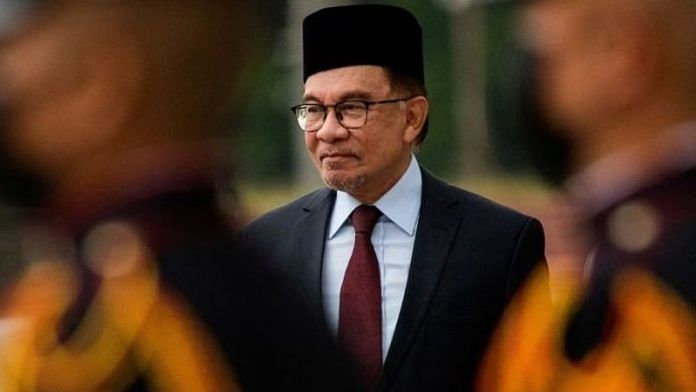China’s proactive efforts in courting countries part of the Association of Southeast Asian Nations – ASEAN – amid heightened pushback from the West have led to discernible advancements. Despite rising tensions in the South China Sea and the great power rivalry between China and the United States, some countries within the region tend to view geopolitical dynamics in binary terms, often attributing responsibility to the US for escalating tensions and exaggerating the ‘China threat’. Malaysia serves as a prime example of a country subscribing to and promoting this narrative.
Last week, on the sidelines of the ASEAN-Australia Special Summit in Melbourne, Malaysian Prime Minister Anwar Ibrahim made some pointed remarks. “If they [the West] have problems with China, they should not impose it upon us. We do not have a problem with China.”
Furthermore, in an interview with the Financial Times last month, he condemned the West for succumbing to “China phobia”. He also hit back at the US for criticising Kuala Lumpur’s relationship with Beijing, questioning why his country should “pick a quarrel” with its largest trading partner.
Anwar’s statements not only emphasise China’s importance to Malaysia but also highlight deep-seated divisions about the country within ASEAN. This stance solidifies the dominant practice of non-alignment in the region, emphasising the “don’t make us choose” sentiment.
Is ASEAN divided or neutral?
The prevailing narrative suggests that ASEAN countries strive for neutrality to prevent the region from becoming a geopolitical battleground. Many Southeast Asian nations have adopted the strategy of ‘hedging’ in their dealings with the US and China. They seek to maximise engagement while protecting their interests, attempting to distance themselves from the China-US rivalry.
However, a critical question arises: do their ties with China and the US truly enable them to maintain neutrality? The answer suggests that ASEAN is more divided than neutral.
These divisions are primarily influenced by the nature and extent of the countries’ engagements with China. ASEAN member states often align with or diverge from China based on their economic and strategic interests. For instance, China holds the position of Malaysia’s largest trading partner and the latter has endorsed the Belt and Road Initiative (BRI) despite encountering delays and evident debt burdens in associated projects. Similarly, smaller countries such as Cambodia and Laos demonstrate significant reliance on China.
Conversely, the Philippines finds itself in a perpetual state of tension with China due to the South China Sea dispute. This friction has prompted the Philippines to strategically pivot toward cultivating closer ties with the US. The Philippines actively seeks to strengthen its ‘network of alliances’. It has pursued defence agreements and military exercises with like-minded countries to enhance its security posture and counterbalance China’s assertiveness in the region. As a result, the Philippines often faces criticism from Chinese social media users, who frequently highlight the country’s perceived lack of seriousness in improving ties with Beijing and accuse it of playing into Washington’s hands.
Also read: China must stop seeing India as inferior. Its own scholar calls Delhi ‘stronger, assertive’
ASEAN centrality: myth or reality?
Several countries, including India, have positioned ASEAN at the core of their Indo-Pacific policies and strategies. Recognising the potential for geopolitical shifts to turn the region into a theatre of competition, ASEAN issued its own outlook on the Indo-Pacific in 2019.
Beijing’s actions in the South China Sea have long posed challenges for ASEAN, leaving member states torn between bolstering ASEAN unity and pursuing individual interests, particularly economic benefits through partnerships with China. Navigating stability in the Indo-Pacific presents formidable obstacles. ASEAN’s centrality and unity face significant tests primarily due to tensions in the South China Sea, rather than solely due to actions by the US or its Freedom of Navigation Operations.
Over the past two decades, ASEAN has grappled with presenting a unified stance. It’s not just about picking sides between China and the US. ASEAN nations must also advocate for their interests, and press Beijing to expedite the establishment of a robust code of conduct or reduce tensions in the South China Sea.
Anwar’s continued criticism of the West overlooks ASEAN’s collective responsibility of dealing with China as a cohesive unit. While his remarks prioritise Malaysia’s interests, they inadvertently undermine ASEAN’s centrality. Developments like these bolster China’s position and unequivocally weaken ASEAN, presenting formidable challenges to the stability of the Indo-Pacific region.
Sana Hashmi, PhD, is a fellow at the Taiwan-Asia Exchange Foundation and George HW Bush Foundation for US-China Relations. She tweets @sanahashmi1. Views are personal.
(Edited by Zoya Bhatti)



